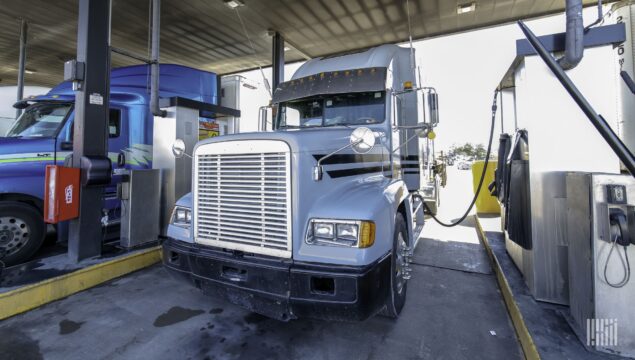Fuel price surge pushes cost of running empty higher
The cost of running empty just went up again. Nonrevenue, or empty miles, are nothing new. Carriers don’t get paid when they’re not loaded. While the cost bucket was up alongside fuel prices last year, it’s already up significantly in 2022.
Carriers have fuel surcharges (FSCs) in place to cover fluctuations in diesel prices for paid miles. However, they don’t cover deadhead, out-of-route miles or idle time. That means as fuel prices increase, so do the costs associated with running empty.

FSCs only stretch so far
At $5.25 per gallon, the latest week marked one of diesel fuel’s largest one-week jumps on record. The week preceding it was the highest dating back to 1994, according to the Department of Energy’s statistics and analysis agency.
Diesel’s recent ascent dates back to the end of 2020. The average weekly price increased 30% year-over-year for all of 2021 (up 37% from the beginning to the end of the year). Heading into Russia’s invasion of Ukraine, prices were up nearly 40% year-over-year to start 2022.
Large carriers have FSC programs in place to capture the volatility in prices. Most carriers set FSCs weekly based on the DOE’s on-highway retail price published on Monday. This means there is a weekly lag in the mechanism where carriers have to eat the increase when prices continue to rise throughout the week but benefit when they fall.
Steadily rising prices can strain carrier cash flows until prices moderate and FSC programs have time to catch up.
Some large carriers have above- and below-ground fuel storage tanks at their terminals, buying fuel in advance, sometimes opportunistically, which can provide a bit of a hedge. Also, the big carriers can buy at prices closer to wholesale rates, another buffer to fuel costs as FSCs are established on retail prices. However, most public fleets don’t directly engage in derivatives or hedging practices as a tool of mitigating volatility.
There is no offsetting revenue stream for deadhead. Empty miles are more expensive as diesel prices have soared and carriers can’t immediately go back and renegotiate contracts to adjust for the increases.
The incremental cost of empty miles could increase roughly $2,000 to $3,000 per tractor year-over-year in 2022 on higher diesel prices alone. The math assumes diesel prices stay level and that deadhead and fuel consumption metrics hover around industry averages.
Large fleets wouldn’t see as big of a headwind due to fuel purchasing power and better mileage economics. They often run younger equipment and have more advanced fuel economy programs.
But smaller carriers will likely struggle, left recouping the higher expense through rate increases, assuming the market cooperates. Smaller operators buy exclusively at the pump using preferred rewards and perks programs. The premium they pay for fuel could be more difficult to account for in their pricing models while at the same time trying to remain competitive.
Carriers have been successful offsetting higher wages and insurance costs, and more recently higher maintenance expenses due to equipment delivery delays, through rate increases. Higher empty miles expense is one more hurdle that will have to be navigated in the everything-costs-more economy.





